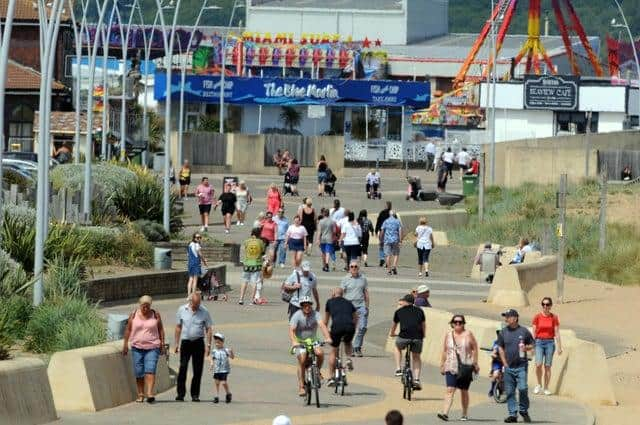The coronavirus infection rate in South Tyneside remains the third highest in England as Government impose local lockdown measures in Leicester


With just seven people testing positive for Covid-19 in Sunderland throughout June, according to Public Health data, the situation in the city appears to be looking brighter with lockdown measures set to ease further on Saturday, July 4.
But the total number of cases in South Tyneside standing at 751 as of Monday, June 29, means the city has seen the third-highest rate of infection in England with 499.8. cases per 100,000 people.
Advertisement
Hide AdAdvertisement
Hide AdNearby Gateshead is the only upper-tier local authority to have a higher infection rate with 501.7. Meanwhile, Sunderland, which shares an NHS Trust with South Tyneside, sits second with 500.00 cases per 100,000.
Back in April, Sunderland was confirmed to have the highest infection rate in England when cases reached 370 cases per 100,000 people.
As a result, Sunderland City Council leader, Graeme Miller said: “Covid-19 is not hitting everybody fairly. The ONS statistics the health statistics are now beginning to show that poorer areas are being hit at least twice as hard as more affluent areas.
“Part of that is the background to the North East, and to Sunderland specifically, we have an ageing population with many secondary health issues tied to the fact that Sunderland was a heavy industrial zone.
Advertisement
Hide AdAdvertisement
Hide Ad“When you then look at ten years of austerity and the unintended consequence of it – because it wasn’t thought through properly in my opinion – and you’ve had 16,000 health beds come out of the NHS, tens of thousands of nurses and doctors and a £9billion black hole in adult social care. All of that has come home to roost and Sunderland, being a poor area, is one of the worst affected.”
As England prepares to make its next step out of lockdown, new local measures are ready to be enforced should there be a surge in the number of new cases.
Restrictions will be tightening rather than easing in Leicester this week after the city reported a spike of 658 new positive coronavirus cases in the first two weeks of June.
In that same period, Sunderland confirmed six new cases and South Tyneside reported seven.
Advertisement
Hide AdAdvertisement
Hide AdBut with the areas being hit particularly hard by coronavirus when full lockdown was being enforced, the Government will be closely monitoring the number of cases in the likes of Sunderland and South Tyneside in the event a second spike should occur.
According to the latest figures from Public Health England and Cambridge University, the reproduction rate (R number) in the North East and Yorkshire is the lowest in the country at around 0.89.
The area previously had the highest R number, which measures how many people the average infected person would go on to infect.
This differs from the rate of infection which is a measurement of the total number of infections in proportion to the population.
Advertisement
Hide AdAdvertisement
Hide AdThe Gazette has requested more localised R rate data for the likes of Sunderland and South Tyneside but there remains no data available for any specific town, city or county outside of London.
